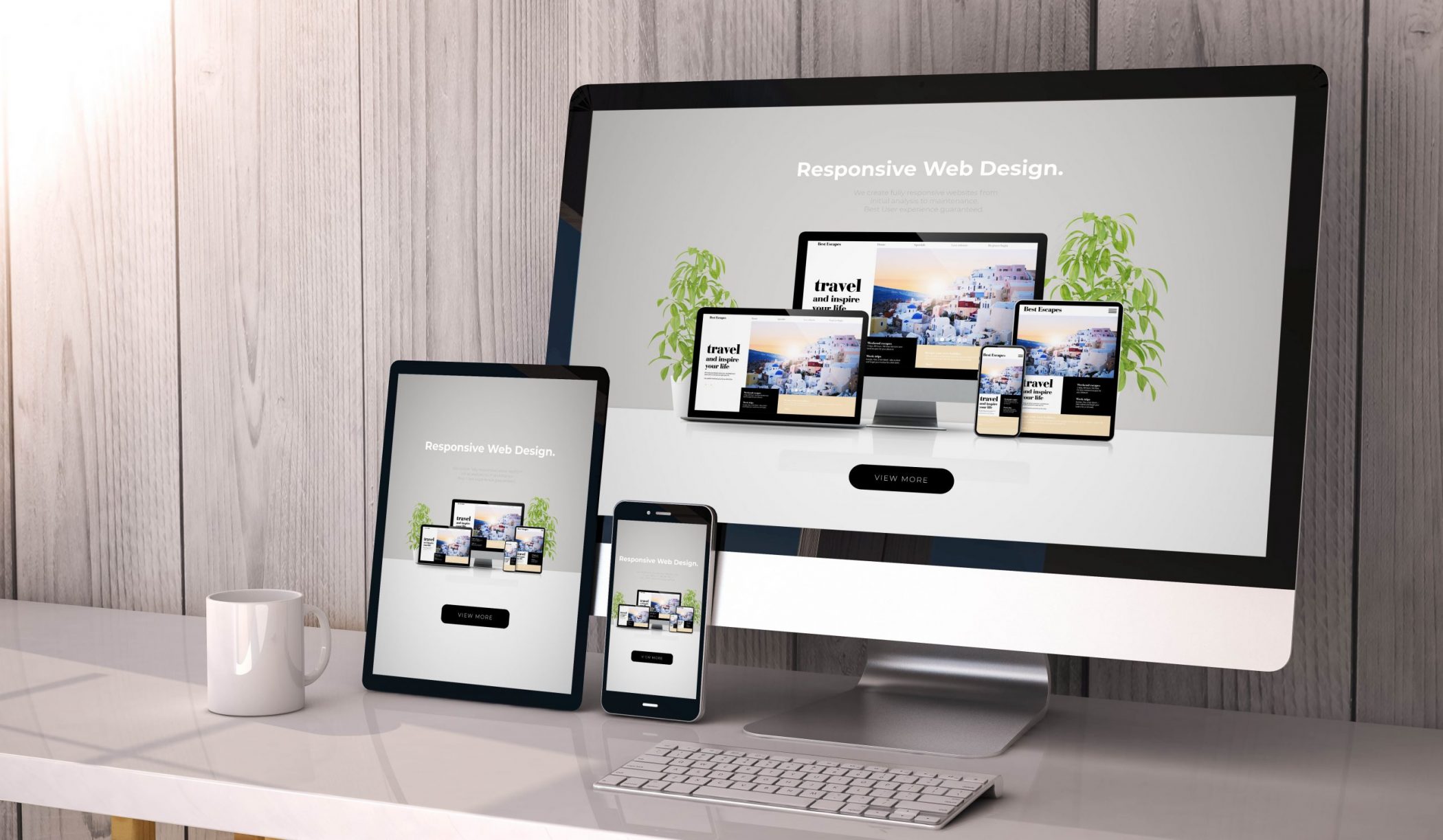Important Tips for Enhancing Your Online Visibility Via Web Design
In today's digital landscape, web design plays a vital role fit an on-line visibility. A well-structured site can substantially boost user interaction and brand name identity. Key components such as user experience, mobile optimization, and load speed are vital considerations. Understanding these elements can make a significant difference. What specific approaches can be used to efficiently apply these design concepts? Discovering these elements will certainly reveal more about boosting online visibility.
Focus On User Experience (UX)
When designing a website, prioritizing user experience (UX) is essential for making sure that site visitors can browse the website properly and engage with its content. A well-structured design helps individuals find information quickly, decreasing irritation and raising the probability of return sees. Key elements such as instinctive navigating, clear contact us to activity, and aesthetically enticing style add greatly to a positive UX.
Additionally, consistency in design components, consisting of color systems and typography, promotes knowledge and count on. Focus to lots times is also vital; fast-loading web pages maintain customers, while delays can result in high bounce rates. Including responses mechanisms, such as surveys or get in touch with types, permits organizations to recognize user requirements and enhance appropriately. Eventually, a concentrate on UX not just improves site visitor fulfillment yet also supports the general objectives of the site, driving conversions and developing a dedicated audience.
Maximize for Mobile Gadgets
In today's digital landscape, maximizing for smart phones is essential for efficient web design. This includes carrying out receptive layout, guaranteeing fast loading times, and integrating touchscreen navigation functions. These aspects collectively enhance user involvement and contentment on mobile platforms.
Receptive Layout Importance
Receptive style stands as a keystone of modern-day internet advancement, ensuring that internet sites function effortlessly throughout numerous tools, especially smart phones. As mobile phone use remains to increase, users anticipate a consistent experience despite display dimension. A receptive style adjusts the design, images, and performances to various gadgets, enhancing usability and interaction. This versatility is crucial, as it enables businesses to get to bigger target markets without the need for separate mobile sites. Additionally, search engines favor responsive sites in their positions, making it important for visibility in a jampacked digital landscape. Inevitably, spending in responsive layout is not simply about visual appeals; it is a tactical method that boosts user experience and drives prospective conversions.
Rapid Loading Times
Rapid packing times are essential for optimizing mobile phones, as individuals significantly expect immediate access to info - Website Design Agency. A website that lots promptly enhances user complete satisfaction and reduces bounce rates. Mobile users often access websites on-the-go, where slow loading can lead to disappointment and abandonment. To achieve quick loading times, internet developers should focus on image optimization, reduce HTTP demands, and utilize caching strategies. Furthermore, utilizing content distribution networks (CDNs) can better boost tons speed by dispersing material closer to users. Simplifying the website's code and leveraging asynchronous packing for manuscripts can likewise add to better performance. Inevitably, a fast-loading web site not just supports user interaction however also favorably impacts search engine positions, making it an essential element of effective web design
Touchscreen Navigation Features
A smooth user experience on mobile phones greatly depends on reliable touchscreen navigation features. Developers must focus on user-friendly designs that accommodate gestures such as touching, swiping, and pinching. Large, conveniently tappable buttons lower user frustration and boost capability, enabling for smoother interactions. In enhancement, including visual feedback, such as highlighting switches when pushed, can considerably enhance user involvement.
Applying a consistent navigation structure across pages aids in user positioning, making it simpler for visitors to locate info. In addition, receptive design warranties that aspects resize suitably for various screen sizes, maintaining usability. Ultimately, decreasing the need for scrolling and providing quick accessibility to vital features will assist customers browse efficiently, eventually cultivating a favorable online experience.
Emphasis on Load Rate
While internet site visual appeals and performance are important, focusing on tons rate is crucial for keeping visitors and boosting general user experience. Study indicates that users expect internet sites to load in under 3 seconds; anything longer can result in enhanced bounce rates. A slow-loading site frustrates customers and reduces the chance of retaining their rate of interest.
To enhance tons speed, web designers need to enhance picture dimensions, lessen HTTP demands, and take advantage of web browser caching. In addition, making use of material shipment networks (CDNs) can distribute web content much more successfully throughout numerous locations, resulting in faster accessibility times.
Removing unneeded plugins and scripts can lower lots times considerably. Regularly evaluating site speed using tools like Google PageSpeed Insights helps determine areas for improvement. By concentrating on tons speed, services can create a more seamless searching experience, inevitably motivating user interaction and boosting conversion prices. Speed is not just a technical aspect; it's a vital component of user fulfillment.
Carry Out Clear Navigating
Efficient navigating works as the foundation of a straightforward website, directing visitors effortlessly with its content. A well-structured navigation system assures that users can conveniently find the info they look for, improving their total experience. It is necessary to prioritize simpleness; menus should be uncomplicated, with clear labels that precisely represent the corresponding web pages.
Organizing material into sensible categories can additionally assist in quicker gain access to, helping customers navigate without really feeling overwhelmed. Applying breadcrumb tracks allows visitors to track their journey with the site, giving context and making it possible for easy backtracking.

Make Use Of Engaging Visuals
Incorporating interesting visuals can substantially enhance a website's allure and performance, as they catch user interest and share info a lot more dynamically than text alone. High-grade pictures, video clips, and infographics can produce a memorable user experience, motivating visitors to invest even more time on the website. Visuals can also assist in storytelling, allowing brand names to connect their message better and stimulate psychological reactions.
Using a constant color palette and layout style can in addition enhance the total aesthetic influence. Interactive aspects, such as sliders or computer animations, can additionally engage customers, making navigation extra enjoyable. Moreover, visuals ought to be optimized for quick loading times to stop irritating hold-ups that could drive customers away. Inevitably, a thoughtful assimilation of engaging visuals can not only boost aesthetic allure however likewise improve user comprehension and retention, leading to higher involvement and conversion rates.
Keep Constant Branding
Maintaining constant branding across a website is vital for promoting and developing a solid identity depend on with visitors. This uniformity incorporates various components, consisting of color design, typography, logo designs, and images. By making sure that these components line up with the brand's core message, businesses can create a cohesive experience that resonates with users.
A distinct brand name identification not only improves recognition yet additionally enhances consumer loyalty. When site visitors run into a consistent appearance and really feel, they are more probable to view the brand name as trustworthy and specialist. Inconsistent branding, on the other hand, can cause complication and lessen the total user experience.

Incorporate Search Engine Optimization Best Practices
Producing a strong brand name identity is only component of the formula for an impactful site; enhancing for online search engine is similarly vital. Including SEO ideal techniques warranties that a website rates higher in online search engine results, making it a lot more noticeable to prospective consumers. This includes using relevant key words throughout the website's material, consisting of titles, headers, and meta summaries, which assist online search engine recognize the website's purpose.
Additionally, maximizing pictures with alt tags and assuring fast filling times improves user experience and lowers bounce prices. A mobile-friendly layout is crucial, as even more customers access the internet using mobile phones. Inner linking in between web pages can enhance website navigating and keep visitors engaged much longer. Consistently upgrading web content with fresh details signals to search engines that the site is active, which can favorably affect rankings. By incorporating these strategies, businesses can significantly boost their on the internet presence Visit Website and bring in more web traffic to their internet sites.
Regularly Asked Inquiries
Just How Can I Gauge the Performance of My Web Design?
To measure web design efficiency, one can evaluate user interaction metrics, display conversion rates, conduct A/B testing, gather user responses, and examine website efficiency with analytics tools, making certain continual enhancement and alignment with user demands.
What Equipment Can Assist With Web Design Analytics?
Google Analytics, Hotjar, and Adobe Analytics are powerful devices for web design analytics. Web Design services. These systems make it possible for individuals to track site visitor behavior, evaluate web traffic sources, and action engagement, offering useful insights for enhancing layout efficiency and user experience
Just how Frequently Should I Update My Internet Site Design?
A website style must be upgraded at the very least annually to remain pertinent and interesting. Frequent updates might be required based on user feedback, developing patterns, or substantial adjustments in company goals or offerings.
What Are the Common Web Design Mistakes to Prevent?
Common web design errors consist of extremely messy layouts, bad navigating, inconsistent branding, ignoring mobile responsiveness, sluggish packing times, and neglecting user experience. Preventing these challenges can substantially improve a site's efficiency and user interaction.
Just How Can I Ensure My Website Comes to Every person?

Prioritize User Experience (UX)
When designing a making, internet site user experience IndividualUX) is essential for necessary that visitors can site visitors the browse effectively website engage with involve content. A site that lots promptly enhances user contentment and her latest blog decreases bounce rates. While internet site looks and functionality are vital, prioritizing load speed is vital for retaining site visitors and boosting total user experience. A mobile-friendly design is crucial, as even more individuals access the web by means of mobile gadgets. Common web design blunders include extremely chaotic layouts, poor navigation, inconsistent branding, overlooking mobile responsiveness, slow filling times, and disregarding user experience.